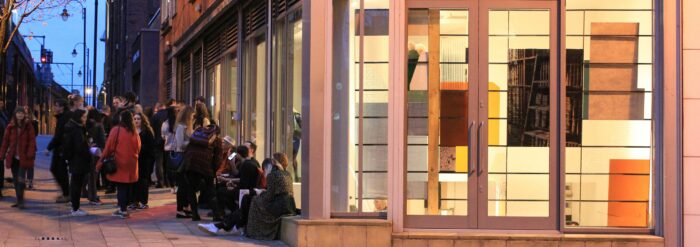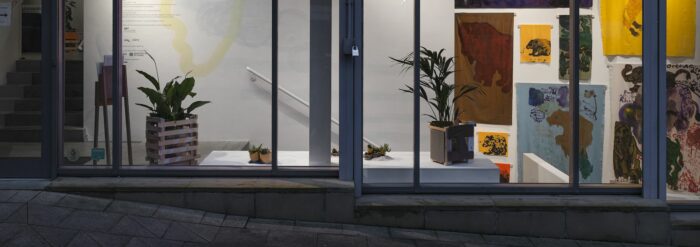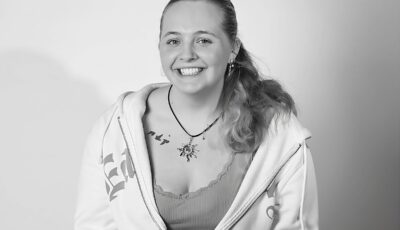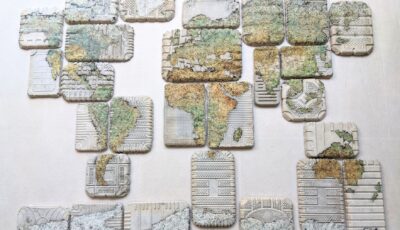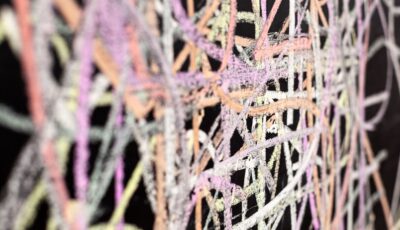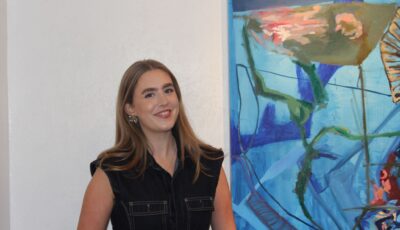
Artists and Sustainability spotlight: Jo Clements
Posted on 19 June 2024
This month we’ve invited Jo Clements to contribute to our ongoing series Spotlight – Artists and Sustainability, where we ask artists to share short responses about their work and how it might relate to climate change.
Jo Clements is an artist and artists mentor/coach based at Islington Mill, Salford. Jo has a fine art, practice-based PhD, lectured on Fine Art programmes in HE for over 10 years and was previously the Educational Director of Artists and Education CIC. Supported by a-n she completed the RD1st Coaching Programme in 2017 and continues to support artists through individual coaching and mentoring and for gallery development programmes including at Castlefield Gallery. She was the overall winner of the Greater Manchester Arts Prize 2018 and was on the selection panel for the 2019 prize. In October 2020 Jo was awarded an AI fellowship with BeFantastic Bangalore focusing on AI and Machine Learning. She recently had her first major solo exhibition 25th Feb- 7th May 2023 at The Whitaker Museum and Art Gallery, Rawtenstall.
In what ways do you feel your work might relate to issues of climate change and sustainability, in the content of the work, its narrative, conceptually or theoretically. How might it speak to or challenge public discourse?
Whilst my work is not explicitly about climate change it is concerned with the conditions within which we make sense of the world. I’m especially interested in the margins of awareness, how the range of what we think and do is limited by what we fail to notice or ignore entirely.
The work made for my solo exhibition in 2023 Everyone in This Room is Connected to Everyone in This Room, at The Whitaker Museum and Art Gallery, was informed by research into visualisations of the brain, philosophies of knowledge value, and the reclamation of land via plant intelligences. The work mirrors fantastical science fiction narratives that imagine a world far removed from our present reality. A brain garden made from velvet disembodied human brains emerges from rock or sand on copper or 3d printed stems (as if they’re sucking knowledge from the ground) and pose the questions – what would it mean to be identified by your brain (knowledge) and its contents alone, detached from any other signifiers such as class, race, sexuality or gender? What use is it to acquire knowledge if you then can’t/don’t do anything with it?
Hugely influenced by Cal Flyn’s book, Islands of Abandonment, the work references plants such as hyperaccumulators – a hyperaccumulator is a plant capable of growing in soil or water with very high concentrations of metals, absorbing these metals through their roots, and concentrating extremely high levels of metals in their tissues thereby extracting it from the soil and ‘Succession’ a term coined by botanist Frederick Clements (no relation). Plant succession is described as ‘a developmental process through which the community underwent a well-defined series of stages that ultimately resulted in a mature, or climax, community’.
With regards to the materials, processes and techniques you use to produce your work, are there any practical decisions you make with regard to climate change and sustainability?
Undoubtably for all artists there are some difficult decisions to be made. I often use (recycled) copper which is 100% recyclable, it can be melted down and recycled time and time again without any loss of properties (it is estimated that in the last one hundred years two-thirds of the 690 million tons of copper produced are still in productive use) however, copper mining has a devastating effect on the environment and is mostly mined and shipped from Chile.
I recently made a work that required 1,600 separate 3d prints. One advantage 3D printing (or additive manufacturing) has when it comes to sustainability is that models, prototypes, tools, molds, or final products, are made by adding material instead of subtracting it and producing waste. By 2050, additive manufacturing (AM) could save up to 90% of the raw material needed for manufacturing, according to a European Commission study. The U.S. Department of Energy estimates that (compared to traditional manufacturing) AM might slash waste and materials costs by nearly 90% and cut manufacturing energy use in half. In addition the sector is constantly evolving with many new filaments currently on the market and being developed that use recycled materials deliberately sourced by products such as timber waste.
For the velvet brains made for my work The Glittering Centrepiece of the Whole Fucking World (2023) I had to buy a large quantity of silk velvet and did check to make sure that the factory I bought from was global organic textile standard, ecology & social responsibility certified. I only use FSC certified packaging and paper and try and be energy conscious in my studio and don’t EVER throw any off cuts of materials away.
In general, how do you feel galleries, art spaces, artworks and artists, might be able to contribute, what if any role do you feel they can play in a progressive conversation?
Sometimes the task ahead to combat climate change feels overwhelming. Many of our problems exist not because we don’t know that they are damaging but because we struggle to imagine how they could be done differently. Our brains need re-wiring.
Galleries, art spaces, artworks and artists are all in the business of imagining how things might be perceived or done differently and this is where our collective power lays. Whilst I don’t think an artist’s role should be a didactic one or that artists should feel obliged to make works that explicitly relate to climate change, we are in the business of creating responses, providing platforms and amplifying voices in whatever direction or form our practices take, and this is where the real opportunities to inspire different ways to consider the world in which we live reside. To make work that explores the complex human, social and psychological conditioning that contributes to our sorry situation.
We know that the art world needs to change – wasteful art fairs, energy sucking exhibitions, wasteful manufacturing processes etc etc. Galleries, artists and arts organisations have a duty to create a community that we all want to be a part of, and to contribute to, that is not a behemoth of waste and pollution – from blue-chip galleries to publicly funded community spaces. And the conversation needs to embrace radical ideas. What if galleries adopted policies of showing/buying a percentage of artwork that has been sustainably or locally produced for instance? Or compiled a directory of sustainable local manufacturers/transportation/ethical funding for artists to source? Refused to sell to collectors or receive funding from those with dubious ethical financial credentials!?!
The commercialisation of everything (capitalism) throughout the world has largely contributed to this state of affairs, many galleries and museums have been complicit in this – do we really need mass produced merchandise? Who really needs (or wants) a mass produced Van Gogh umbrella or a Mondrian coffee cup? How about supporting more local makers and artists to sell in museum and gallery gift shops instead?
Are there any tips or advice, anything you have learnt you might want to share with other artists or our audiences?
Get educated! I recently sat in on the BAFTA albert x AimHi Earth Climate Essentials Masterclass. For information about sustainable concerns for filmmaking BAFTA Albert provide some great information. AIMHI provide brilliant information along with loads of links to a range of different organisations not art related but that might inform changes to your arts business such as changing to a greener bank or travelling smarter alongside info on where and how you can take action.
Also for artists it’s important to understand the origins of your materials – where they come from, how they are manufactured and what their wider impact on the environment is. If manufacturers are reputable and sustainable they’ll have this information readily to hand.
Mostly though we need to stick together. Artists spend enough time trying to be part of a system that often feels so disparate from the act of art making that concentrating any energies on trying to change it feels very far removed from what we are able to do. BUT we do need to talk about the kind of sustainable art world that we want to be a part of – and to recognise that the power to change it is actually in our hands.
